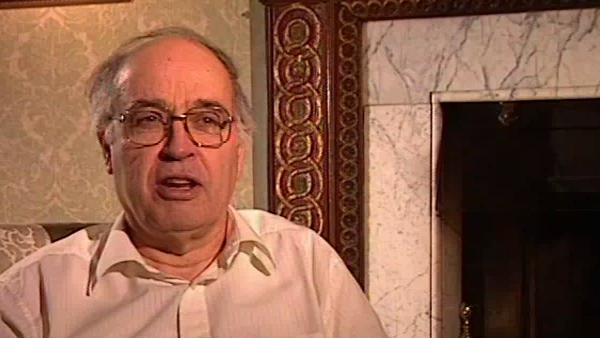NEXT STORY

Fredholm operators
RELATED STORIES

NEXT STORY

Fredholm operators
RELATED STORIES


|
Views | Duration | |
|---|---|---|---|
| 51. The mod 2 index theorem | 600 | 01:30 | |
| 52. Fredholm operators | 619 | 04:33 | |
| 53. 15 years of index theorem | 665 | 03:28 | |
| 54. The Fields Medal | 1151 | 02:46 | |
| 55. Back to Princeton | 570 | 03:32 | |
| 56. Eta invariant | 577 | 03:27 | |
| 57. Refining the eta variant | 485 | 03:31 | |
| 58. The L2 index theorem | 529 | 05:49 | |
| 59. Students | 1071 | 01:48 | |
| 60. Bridging the gap between mathematics and physics | 1 | 1536 | 03:17 |


The mod 2 index, it could have gone unnoticed because I think with the emphasis originally on real cohomology and characteristic classes, and so on, you know, you wouldn't see it and you'd have to look very hard for it. And also the original methods of proof wouldn't have allowed for it. And even subsequently if we move further on to the time when there was all this emphasis on the Riemannian geometry approach and the heat equation approach, that's also using real numbers and going even further away from this. So the mod 2 thing was a little bit on its own, could easily have been missed out at the first step, and would certainly have been, you know, trodden underfoot in the stampede later on.
So I've always had a kind of soft spot for it, you know. It was a little bit of a gem that came out. If you do things very carefully, very nicely, you have this little elegant story and it certainly wasn't something that you were going to get easily achieved by any other method. And it remains, you know, one of the sort of trickiest things to get by these... by these methods. And I tell you, you know, you had a soft spot for these kind of theorems that are on their own and are rather refined.
Obviously, many theorems you end up by… they can be attacked in half a dozen different ways, and that's very interesting. And in fact you… Gauss was said to have had 10 different proofs of the reciprocity theory; and the index theorem probably has something like getting on the same way now, and that's very, you know, significant. It means it's on the crossroads of many different routes, and that adds to its interest. But there's other ones that you can only get to by one route, the long end of a long twisting journey up the mountainside, and they have an attraction of their own too, a charm which I rather like.
Eminent British mathematician Sir Michael Atiyah (1929-2019) broke new ground in geometry and topology with his proof of the Atiyah-Singer Index Theorem in the 1960s. This proof led to new branches of mathematics being developed, including those needed to understand emerging theories like supergravity and string theory.
Title: The mod 2 index theorem
Listeners: Nigel Hitchin
Professor Nigel Hitchin, FRS, is the Rouse Ball Professor of Mathematics and Fellow of Gonville and Caius College, Cambridge, since 1994, and was appointed to the Savilian Professorship of Geometry in October 1997. He was made a Fellow of the Royal Society in 1991 and from 1994 until 1996 was President of the London Mathematical Society.
His research interests are in differential and algebraic geometry and its relationship with the equations of mathematical physics. He is particularly known for his work on instantons, magnetic monopoles, and integrable systems. In addition to numerous articles in academic journals, he has published "Monopoles, Minimal Surfaces and Algebraic Curves" (Presses de l'Universite de Montreal, 1987) and "The Geometry and Dynamics of Magnetic Monopoles" (Princeton University Press, 1988, with Michael Atiyah).
Tags: index theorem, mod 2, mathematical proof
Duration: 1 minute, 31 seconds
Date story recorded: March 1997
Date story went live: 24 January 2008